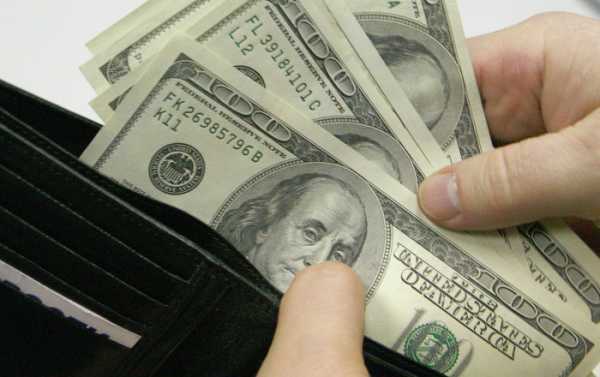
The US economy continues to expand at a sustainable pace, albeit the most recent data point to a mild slowdown in consumer spending and inflation due to higher credit costs and a strong dollar dampening imports prices despite disruptions in global trade.
Kristian Rouz — A new batch of US macroeconomic data suggests the Federal Reserve is likely to take an increasingly cautious policy stance towards the yearend. The ongoing rise in consumer spending has failed to translate into higher consumer prices despite a rise in fuel costs, whilst import prices remained steady despite tensions in international trade.
According to a new report from the Commerce Department, consumer spending rose 0.3 percent in August after a 0.4 percent increase the previous month. Domestic consumption accounts for roughly 70 percent of US GDP, and the ongoing expansion suggests the broader economy is on track to expand more than 3 percent this year.
“On balance, these data indicate a solid but slowing momentum in consumer spending growth in Q3, around 3.5 percent after a remarkable 3.8-percent advance in Q2. Our GDP tracker point to growth around 3.3 percent in Q3,” Lydia Boussour of Oxford Economics said.
US consumers increased their spending on health care last month, which helped offset a slump in automobile and parts purchases.
A separate report found orders for key capital goods dropped in August — pointing to a possibly slower overall business investment. Meanwhile, the US trade deficit has widened over the past few months, which could subtract percentage points from the third-quarter GDP reading.
“Consumers aren’t overdoing it,” Russell Price of Detroit, Michigan-based Ameriprise Financial Inc. said. “The economy is growing at a solid rate but not at an overly strong pace that would otherwise induce inflation.”
The August increase in consumer spending was also the smallest in six months, as the nascent pickup in wage growth is still insufficient to provide a major and sustainable boost to household outlays.
The Commerce Department also said effective household incomes rose 0.3 percent, which is below previous expectations. However, a slower-than-expected inflation was supportive to the growth of disposable incomes.
Consumer prices rose just 0.1 percent month-on-month in August, and increased an annual 2.2 percent — slightly above the Fed’s 2-percent inflation target. However, a slowdown in monthly inflation just ahead of the Fed’s most recent interest rate hike earlier this week could suggest the central bank is likely to skip on substantial policy moves in the coming two months.
Core inflation — excluding food and energy — rose 2.0 percent year-on-year in August, and less than 0.1 percent from the previous month.
However, some economists say US inflation has the potential to gain momentum in the coming months, meaning the Federal Reserve would have to intensify its policy tightening.
“The recently implemented tariffs on $200 billion of Chinese-made goods could temporarily add to inflation in the next few months, but should not lead to a long-run acceleration in inflation,” Gus Faucher of PNC Financial Services Group said.
The US economy expanded 4.2 percent in 2Q18, and the current projection for third-quarter growth ranges between 2.8 and 4 percent. Fed Chair Jerome Powell said earlier this week that the economy hadn’t been affected by global trade tensions during the third quarter.
However, the overall trade war-related uncertainty could weigh on investor sentiment and hamper business spending.
Powell also stressed that the Fed policy board expects inflation to remain at the 2 percent target “on a sustained basis,” suggesting the ongoing supply-side reforms, deregulation, and rising infrastructure investment are providing a lasting boost to economic activity.
Meanwhile, the looming realignment in global supply chains could drive the prices of imported goods in the US market, adding to the upside pressure on inflation. In order to offset possible gains in prices, the Fed said it would undertake several interest rate hikes next year.
It is unclear whether the US central bank would move rates in December as some expected previously, as the data for August came in softer than expected.
Overall, gradual improvements in the US economy continue amid lower taxes and higher incomes, which have pushed consumer confidence to its 18-year high.
Sourse: sputniknews.com






